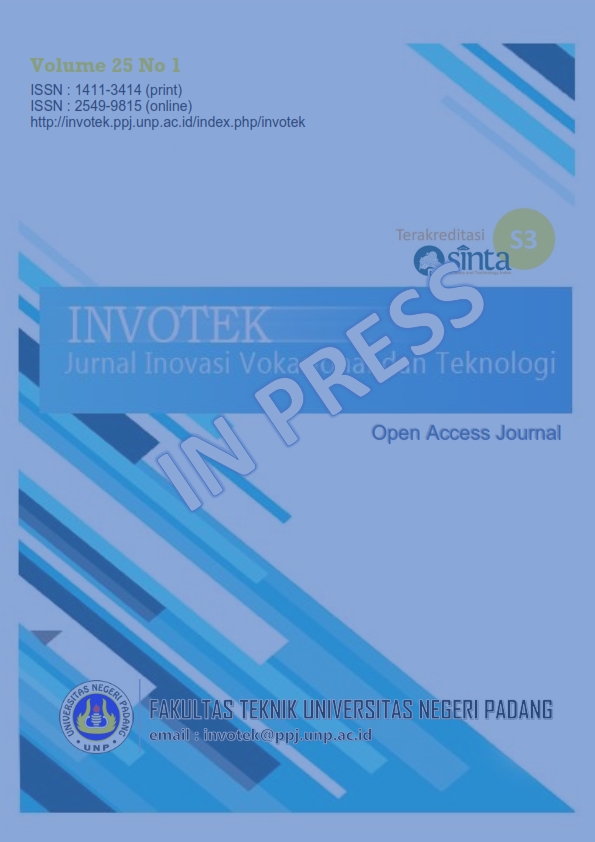Main Article Content
Abstract
KITA Driving Course, located in Kisaran, North Sumatra, faces challenges in maintaining service quality amidst increasing student enrollment. Despite operating since 2013, the institution lacks a structured, data-driven evaluation system to assess student satisfaction. This study applies a quantitative descriptive approach using the K-Means clustering algorithm to classify student satisfaction levels. Data were collected from 100 respondents through a questionnaire based on the five SERVQUAL dimensions: tangibles, reliability, responsiveness, assurance, and empathy. The K-Means algorithm grouped the satisfaction data into three categories: highly satisfied, satisfied, and dissatisfied. The majority of students were classified as satisfied (18 students), followed by highly satisfied (11 students), and dissatisfied (10 students). The findings indicate that the K-Means algorithm provides valuable insights into student satisfaction patterns, enabling targeted service improvements. The analysis also reveals that responsiveness and assurance were key areas of dissatisfaction, suggesting that instructor response time and safety assurance should be prioritized. These insights can help improve service strategies and can be adapted by other educational institutions for quality optimization through data analysis.
Keywords
Article Details

This work is licensed under a Creative Commons Attribution 4.0 International License.
Copyright (c): Shelvina Ayu Wardani, Ruri Ashari Dalimunthe, Abdulkarim Syahputra (2025)References
- P. S. Aithal and S. Aithal, “Management of ICCT underlying Technologies used for Digital Service Innovation,” International Journal of Management, Technology, and Social Sciences (IJMTS), no. 4, pp. 110–136, 2019, [Online]. Available: https://ssrn.com/abstract=3512944
- V. Beanland, N. Goode, P. M. Salmon, and M. G. Lenné, “Is there a case for driver training? A review of the efficacy of pre- and post-licence driver training,” Saf Sci, vol. 51, no. 1, pp. 127–137, Jan. 2013, doi: 10.1016/J.SSCI.2012.06.021.
- N. Made, D. Elianti, D. Putra Githa, A. A. Ngurah, and H. Susila, “Android-Based Driving Course Information System,” Jurnal Ilmiah Merpati (Menara Penelitian Akademika Teknologi Informasi), vol. 10, no. 1, pp. 24–33, Nov. 2021, doi: 10.24843/JIM.2022.V10.I01.P03.
- R. Ruslan, S. Sugiarto, R. Anggraini, and S. M. Saleh, “Forecasting Private Vehicle Ownership and It Effect to Public Transportation Planning in Banda Aceh, Indonesia,” in IOP Conference Series: Materials Science and Engineering, IOP Publishing Ltd, Sep. 2020. doi: 10.1088/1757-899X/917/1/012040.
- J. S. Chiou and C. Droge, “Service quality, trust, specific asset investment, and expertise: Direct and indirect effects in a satisfaction-loyalty framework,” J Acad Mark Sci, vol. 34, no. 4, pp. 613–627, Oct. 2006, doi: 10.1177/0092070306286934/METRICS.
- M. Nilashi et al., “What Factors Influence Students Satisfaction in Massive Open Online Courses? Findings from User-Generated Content Using Educational Data Mining,” Educ Inf Technol (Dordr), vol. 27, no. 7, pp. 9401–9435, Aug. 2022, doi: 10.1007/S10639-022-10997-7/TABLES/8.
- K. Dejaeger, F. Goethals, A. Giangreco, L. Mola, and B. Baesens, “Gaining insight into student satisfaction using comprehensible data mining techniques,” Eur J Oper Res, vol. 218, no. 2, pp. 548–562, Apr. 2012, doi: 10.1016/J.EJOR.2011.11.022.
- N. A. Ompusunggu, P. Purwadi, and A. Calam, “Penerapan Data Mining Untuk Mengukur Tingkat Kepuasan Pada Peserta Kursus Mengemudi Mobil" Karunia" Medan Menggunakan Metode K-Means Clustering,” J. Cyber Tech, vol. 3, no. 8, pp. 1–9, 2020.
- B. Oralhan, K. Uyar, and Z. Oralhan, “Customer Satisfaction Using Data Mining Approach,” International Journal of Intelligent Systems and Applications in Engineering, no. 4, pp. 63–66, 2016, [Online]. Available: www.atscience.org/IJISAE
- R. C. de Amorim, “A survey on feature weighting based K-Means algorithms,” Journal of Classification (Springer), Sep. 2015, [Online]. Available: http://arxiv.org/abs/1601.03483
- R. Liu, “Data Analysis of Educational Evaluation Using K-Means Clustering Method,” Comput Intell Neurosci, vol. 2022, pp. 1–10, 2022, doi: 10.1155/2022/3762431.
- N. Nugroho, Y. Rahmanto, D. Alita, J. Z. Pagar Alam, and L. Ratu, “Software Development Sistem Informasi Kursus Mengemudi (Kasus: Kursus Mengemudi Widi Mandiri),” 2021.
- R. Kurniawan and M. Mukarrobin, “Jurnal Ilmiah ‘Technologia’ KLASTERISASI TINGKAT PENDIDIKAN DI DKI JAKARTA PADA TINGKAT KECAMATAN MENGGUNAKAN ALGORITMA K-MEANS.” [Online]. Available: https://data.jakarta.go.id.
- Dewi Noor Fatikhah Rokhimakhumullah, Devi Nur Cahaya Ningsih, Aji Widya Firmansyah, and Ayun Hanafiyah, “ANALISIS POTENSI E-COMMERCE MELALUI IMPLEMENTASI DATA MINING DALAM PERPAJAKAN: SEBUAH STUDI KOMPARASI,” Juremi: Jurnal Riset Ekonomi.
- A. K. Hermawan, A. Nugroho, and Edora, “Analisa Data Mining Untuk Prediksi Penyakit Ginjal Kronik Dengan Algoritma Regresi Linier,” Bull. Inf. Technol., vol. 4, no. 1 SE-Articles, Mar. 2023, doi: 10.47065/bit.v4i1.475.
- H. K. Mohajan, “Munich Personal RePEc Archive Quantitative Research: A Successful Investigation in Natural and Social Sciences,” Journal of Economic Development, Environment and People, vol. 4, no. 9, 2020.
- Topal, A. Deveci, and A. K. Geçer, “Examination of Student Satisfaction with e-courses by Clustering Analysis,” Innoeduca. International Journal of Technology and Educational Innovation, vol. 9, no. 2, pp. 39–50, 2023.
- F. Nyimbili and L. Nyimbili, “Types of Purposive Sampling Techniques with Their Examples and Application in Qualitative Research Studies,” British Journal of Multidisciplinary and Advanced Studies, vol. 5, no. 1, pp. 90–99, Feb. 2024, doi: 10.37745/bjmas.2022.0419.
- J. Omona, “Sampling in Qualitative Research: Improving the Quality of Research Outcomes in Higher Education,” Makerere Journal of Higher Education, vol. 4, no. 2, Jul. 2013, doi: 10.4314/majohe.v4i2.4.
- S. Zahra, M. A. Ghazanfar, A. Khalid, M. A. Azam, U. Naeem, and A. Prugel-Bennett, “Novel centroid selection approaches for KMeans-clustering based recommender systems,” Inf Sci (N Y), vol. 320, pp. 156–189, Nov. 2015, doi: 10.1016/j.ins.2015.03.062.
- E. W. Liyanto, A. Homaidi, and A. Lutfi, “IMPLEMENTASI K-MEANS CLUSTERING MENGGUNAKAN RAPIDMINER DALAM PENGELOMPOKAN DATA KUNJUNGAN WISATAWAN ASING DI PROVINSI JAWA TIMUR,” vol. 19, pp. 205–216, 2024.
